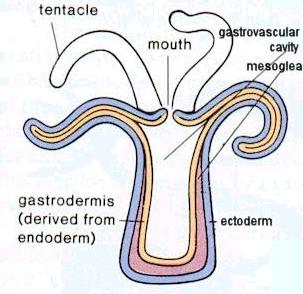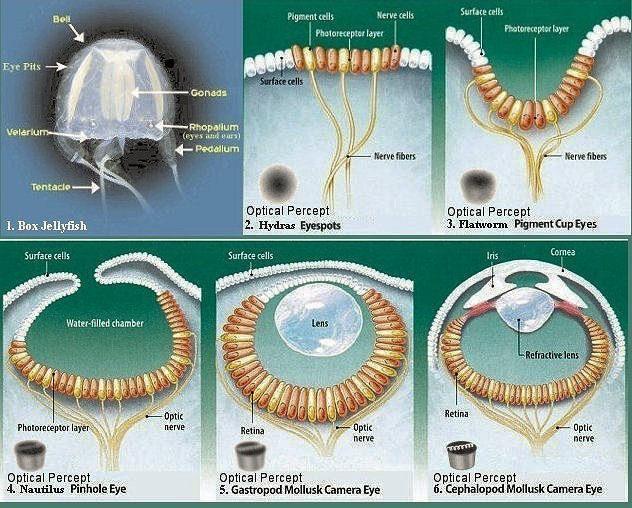

| Home Page | Overview | Site Map | Index | Appendix | Illustration | About | Contact | Update | FAQ |
 |
 |
shape with the mouth region directed downward, are called jellyfishes, or medusae. The polyp is adapted to a sessile life, while the medusa is adapted to a floating or free-swimming existence. At one time, both body forms may have been a part of the life cycle of all cnidarians, because today we see an alternation of generations life cycle of these two forms in certain cnidarians (see Figure 05d). In such life cycle, the polyp stage produces medusae, and the medusae, which produce eggs and |
Figure 05a Cnidaria [view large image] |
Figure 05b Hydra Anatomy [view large image] |
sperm, disperse the species. Cnidarians are quite diversified including the Portuguese man-of-war, sea anemones, hydra and many other species. |
 |
 |
|
Figure 05c Evolution of Vision [view large image] |
Figure 05d Compound Eye |
 |
of cells (Figure 05b). For example, they can produce the ovary and the testes and probably account for the animal's great regenerative powers. Like the sponge, a whole cnidarian can grow from a small piece. When conditions are favorable, small outgrowths, or buds, appear, pinch off, and begin to live independently. Figure 05e shows the cnidaria life cycle involving both sexual and asexual reproductions. The larva in the life cycle represents a juvenile form of the animal undergoing metamorphosis (form change). A rather controversial theory proposed |
Figure 05e Cnidaria Life Cycle [view large image] |
that widely separated evolutionary lineages had occasionally come together to form hybrid species. The larval and adult forms of marine invertebrates often look like entirely different organisms because that is exactly what they used to be. |